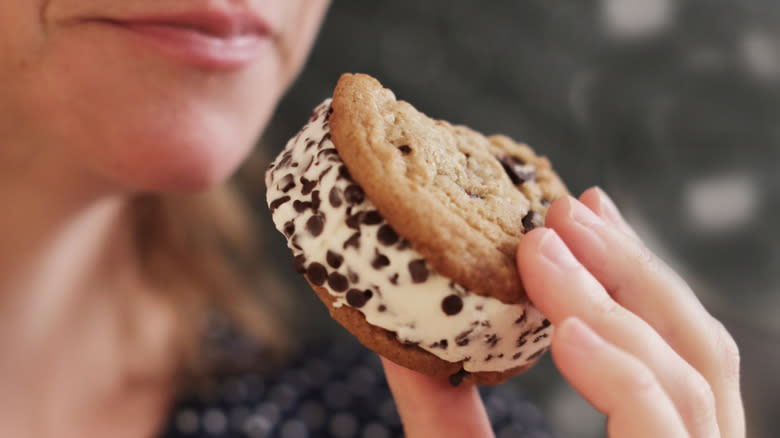How Food Nostalgia Guides Our Approach To Eating

If you've ever heard (or even used) the phrase "the good old days," then you're already familiar with the rosy sheen of a vintage touch. It would be impossible to talk about wistfulness for the past without mentioning food nostalgia. For foodies, a favorite treat often holds powerful memories. Maybe you fondly remember chowing down on a hotdog at a baseball game or getting an ice cream cone after a day at the beach. On a biological level, the brain subconsciously associates these tastes with good memories; effectively, you get a double hit of dopamine from both the pleasant flavor of the food and the feeling of the memory it evokes.
The hippocampus of the brain facilitates memory recall, which works in tandem with the amygdala, the part of the brain that assigns emotional meaning to certain memories. In fact, there's a name for specific tastes eliciting a strong emotional response: the Proust phenomenon. The story goes that French essayist Marcel Proust dipped a madeleine biscuit into a cup of tea, and the resulting flavor catapulted him back to a memory from his childhood with sudden intensity. "Involuntary explicit memory" is the defining characteristic here. If you've ever seen the Disney-Pixar film "Ratatouille" (2007), food critic Anton Ego experiences the Proust phenomenon when he takes a bite of the movie's titular dish — and maybe you feel the same way every time you bite into mashed potatoes.
Read more: Restaurant Foods That Always Taste Better Than What You Make At Home
A Personal Tie To Family Heritage And The Delights Of Childhood

Per the Proust phenomenon, when foodies taste their most beloved nostalgic foods, the experience can be simultaneously sentimental, wistful, and tinged with yearning for the past. Children often have fewer responsibilities, no jobs, and feelings of comfort and safety. Maybe the aroma of chocolate chip cookies brings back memories of grandma baking in the kitchen, as well as the subliminal memories of being worry-free and surrounded by loved ones.
A 2015 study by Jordan Troisi, an assistant professor of psychology at Sewanee, The University of The South, substantiated this idea and also found that what exactly "comfort food" means differs from person to person. Maybe you crave dumplings, kimchi, macaroni and cheese, apple pie, or the stuffed artichokes your mom always made for your birthday. The point is, whatever a person's favorite nostalgic comfort food is, chances are good that it's deeply rooted in personal memory. "It's not just that ice cream, for instance, is really tasty," Troisi explained, via Time. "It's that someone has developed a really significant meaning behind the idea of ice cream due to their relationships with others, and that's what is triggering this effect."
The Raw Magnetism Of A Little Comforting Regression

On a larger scale, nostalgic foods also harken back to simpler times. The popularity of vintage Pyrex cookware and retro 1950s-style kitchen appliances from brands like Smeg demonstrates how commonly shared the desire is to return to a time that is perceived as less complicated than the present day. This also brings up the appeal of familiarity, which was especially important during the COVID-19 pandemic, and likely the reason why many foodies turned to baking and cooking their favorite comfort foods during lockdown. In the same vein, nostalgic foods can also stimulate a feeling of togetherness. If a person's positive food memories involve other people (e.g. Thanksgiving dinner with the entire family), then eating a favorite nostalgic comfort food also reminds them of their communities, helping to relieve feelings of loneliness.
Perhaps this is why '90s foods have enjoyed an especially dominant resurgence lately. Childhood favorites for kids of that era like Oreo O's cereal, Dunkaroos, and Kool-Aid Jammers are all back and, at least for now, here to stay. That may be because it's common for anyone who experienced a bumpy introduction to life as an adult to pine for the pleasures and joys of being a kid. In fact, studies show that a majority of people ages 22 to 55 enjoy experiencing things that offer a blast from the past, and that definitely includes food.
Read the original article on Tasting Table.

